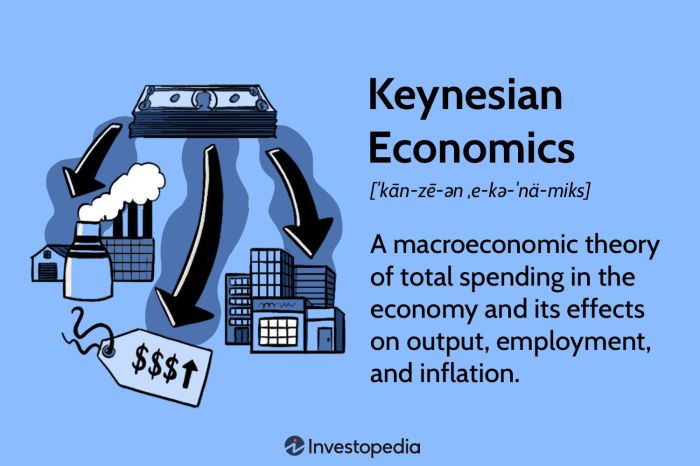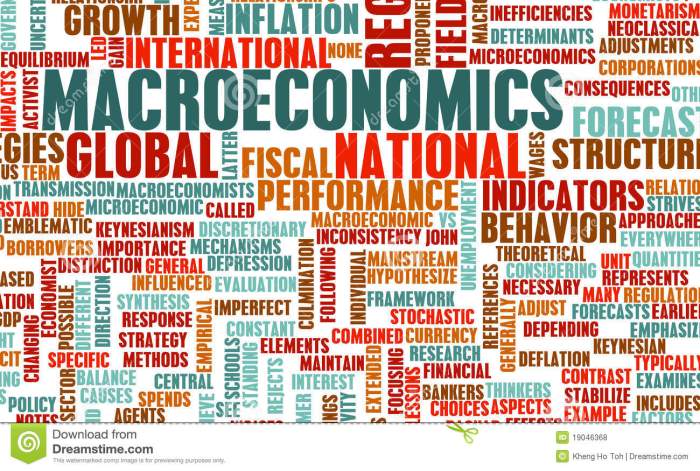Economics today the macro view 20th edition – Economics Today: The Macro View, 20th Edition offers a comprehensive and engaging exploration of macroeconomic principles and policies, providing a thorough understanding of the factors that shape economic growth, stability, and inequality in the modern world.
This authoritative text delves into the fundamental concepts of macroeconomics, including GDP, inflation, and unemployment, and examines the role of government fiscal and monetary policy in influencing macroeconomic outcomes.
1. Introduction
Economics Today: The Macro View, 20th Editiondefines economics as the study of how society manages its scarce resources to satisfy its unlimited wants. This edition emphasizes the importance of understanding macroeconomics, which examines the economy as a whole, to make informed decisions about economic policy.
The book’s scope and purpose is to provide a comprehensive overview of macroeconomics, from basic concepts to current economic challenges. It aims to equip readers with the knowledge and analytical tools necessary to understand and evaluate macroeconomic policies and their impact on economic outcomes.
2. Macroeconomic Framework

Macroeconomics focuses on broad economic indicators such as Gross Domestic Product (GDP), inflation, and unemployment. It examines the factors that influence these indicators and the role of government fiscal and monetary policy in shaping macroeconomic outcomes.
Fiscal policy involves government spending and taxation, while monetary policy involves actions by the central bank to control the money supply and interest rates. Understanding the interactions between these policies is crucial for managing economic growth, stability, and employment.
3. Economic Growth and Development
Economic growth refers to the sustained increase in the production of goods and services over time. Factors contributing to growth include technological advancements, capital accumulation, and human capital development.
Developing countries face challenges in achieving sustainable growth, including poverty, inequality, and limited access to resources. The book discusses strategies and policies to address these challenges and promote inclusive economic development.
4. International Economics

International economics examines the theories and practices of international trade and finance. It covers topics such as comparative advantage, tariffs, and exchange rates.
Globalization has significantly increased interdependence among countries, leading to both opportunities and challenges. The book explores the impact of globalization on economic growth, employment, and income distribution.
5. Financial Markets and Institutions
Financial markets facilitate the flow of funds between borrowers and lenders. Financial institutions, such as banks and investment firms, play a crucial role in intermediating these transactions.
The book discusses the structure and functions of financial markets, including the stock market, bond market, and foreign exchange market. It also examines the role of financial intermediaries in providing liquidity, reducing risk, and promoting economic growth.
6. Labor Markets and Income Distribution
Labor markets determine the allocation of labor resources and the wages paid to workers. The book examines the characteristics and trends of labor markets, including unemployment, wage inequality, and the impact of technology.
Income distribution refers to the distribution of income among individuals and households. The book discusses the factors that determine income distribution and the policies that can be used to address inequality.
7. Economic Policy and Challenges

Governments face a range of economic policy issues, including managing inflation, promoting growth, and reducing unemployment. The book discusses the major economic policy tools and the challenges of balancing economic growth, stability, and equity.
Economic policymaking is often complex and involves trade-offs. The book examines the different perspectives on economic policy and the evidence on the effectiveness of various policy approaches.
8. Special Topics

The book also covers emerging issues and trends in economics, such as climate change, technological advancements, and the impact of artificial intelligence (AI).
Case studies and examples are used to illustrate economic principles and policies in action, making the content relatable and applicable to real-world situations.
Expert Answers: Economics Today The Macro View 20th Edition
What are the key macroeconomic indicators?
GDP, inflation, and unemployment are the three key macroeconomic indicators that measure the overall health of an economy.
How does government fiscal policy influence economic outcomes?
Government fiscal policy involves the use of government spending and taxation to influence economic activity. Expansionary fiscal policy, characterized by increased government spending or tax cuts, aims to stimulate economic growth, while contractionary fiscal policy, characterized by decreased government spending or tax increases, aims to reduce inflation.
What is the role of monetary policy in the economy?
Monetary policy, implemented by central banks, involves the control of the money supply and interest rates to influence economic activity. Expansionary monetary policy, characterized by an increase in the money supply or a decrease in interest rates, aims to stimulate economic growth, while contractionary monetary policy, characterized by a decrease in the money supply or an increase in interest rates, aims to reduce inflation.